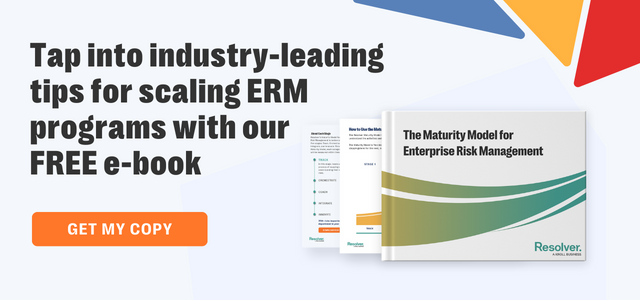erm (174)
|
Financial institutions use Enterprise Risk Management software to efficiently identify, analyze, and manage risk exposure. It gives a unified perspective of all the risks a company is exposed to and tools for monitoring, analyzing, and managing those risks. ERM software helps financial organizations precisely study their risk exposure, prioritize those risks, and develop a risk mitigation strategy.
Moreover, this assists financial institutions in meeting regulatory requirements, reducing economic
Emerging risks, such as cyber-attacks, natural catastrophes, and regulatory changes, can have severe consequences for financial institutions and their enterprise risk management plans. Such dangers can lead to operational interruptions, the loss of secret information, financial losses, and reputational harm. Financial institutions must constantly analyze and upgrade their risk management frameworks and invest in the latest technology and procedures to reduce such risks.
On the other hand, this mi
Risk Management (RM) is a larger domain and a standard procedure that assists organizations in understanding what risks exist, what is subject to those risks, what controls exist for such risks, and then determining whether the present controls are acceptable. Unless they are sufficient, organizations take additional steps to reduce the risk to an optimum level.
Implementing a suitable risk management system within institutions is now a legal mandate and a moral imperative for organizations to sa
An ERM is a structure developed for a company to continuously enhance its risk management competence in a constantly shifting marketplace. It is a discipline and practices ingrained in every company and aids in the successful management and adaptation to different hazards.
Risk management in the enterprise is a continual effort, and it is implemented using strategy in all segments of a corporation. The enterprise risk management system is designed to identify possible risks to an organization's c
Enterprise risk management is a comprehensive, systematic method of recognizing, identifying, and managing hazards in a business. Risk management is viewed proactively and from a corporation viewpoint by ERM. As a result, it is a "top-down" risk management system that requires effective decisions.
Department managers or business units are not responsible for risk management while using ERM. Rather, the effective manager will evaluate employees from an enterprise-wide perspective and establish app
Often, a firm fails due to a lack of monitoring and control, poor strategic management, and incorrect resource allocation. This is despite a solid business plan and a compelling product or service. Using the risk management method protects firms from known and unforeseen risks.
A robust risk management strategy necessitates adhering to the appropriate risk management methods, fulfilling the previously mentioned goals, and transforming the organization into a much more efficient and competitive e
Risk management methods in US enterprises are coming under increased governmental and private scrutiny. The diversity, quantity, and acceleration of risks are all rising, making enterprise risk management increasingly challenging. Businesses are continually battling fires and attempting to reduce risk by taking remedial steps, and this reactive strategy lengthens reaction times and may put these businesses out of business altogether.
Increased breaches, compliance failures, and new guidelines fro
Seeing a firm going bad is difficult when things are proceeding well; however, leaders must constantly be prepared for the worst-case situation. Integrating enterprise risk management throughout your overall company's strategy is critical to operating a successful firm.
"Risk is the probability of an event happening that will affect the attainment of objectives," following the Institute of Internal Auditors. Risk is defined by its impact and likelihood."
Whereas enterprise risk management (ERM) is
Enterprise risk management is an enterprise-related risk management approach. Since its introduction, the approach has been adopted by many industries and sectors as it offers various benefits.
ERM aims to tackle risks strategically and delivers a cohesive picture strategy for the organization's benefit. While it looks identical to governance, risk, and compliance (GRC), the two terms differ very much, with ERM used as a subset of GRC.
The risk management authorities define ERM as a strategic supp
Enterprise Risk Management (ERM) is the act of recognizing and systematically managing probable occurrences that pose risks to accomplishing strategic goals or prospects for strategic advantage.
The evaluation of important risks and the execution of appropriate risk solutions are the essential pillars of ERM. Tolerance or acceptance of risk; termination or avoidance of risk; risk sharing or transfer via policy, a partnership, or other agreement; and risk mitigation or reduction through internal p
When firms consider risk reduction, they frequently divide it into internal and external risks. It seems familiar to label risk as "external" if the perpetrator is from outside your organization, such as an intruder who sneaks in, digitally or physically, and takes business assets. Break-ins, on the other hand, do not pose an external risk.
However, in this blog, we will be discussing business risks and what are the factors of internal and external risks affecting an organization.
What is Busine
|

